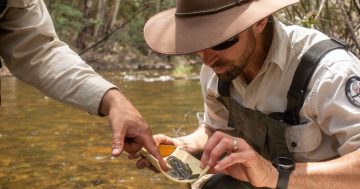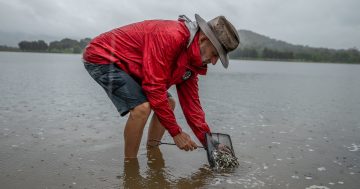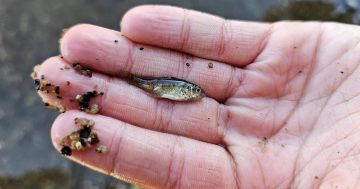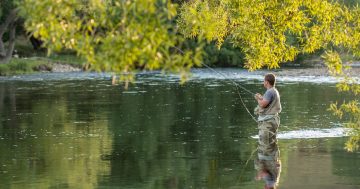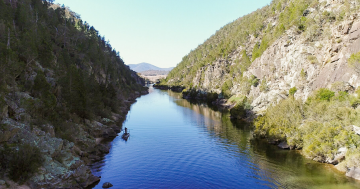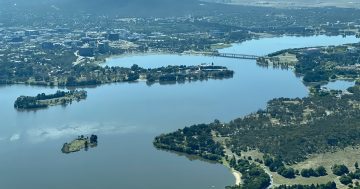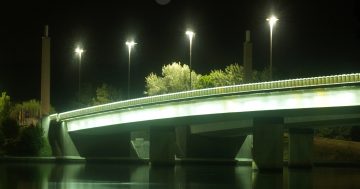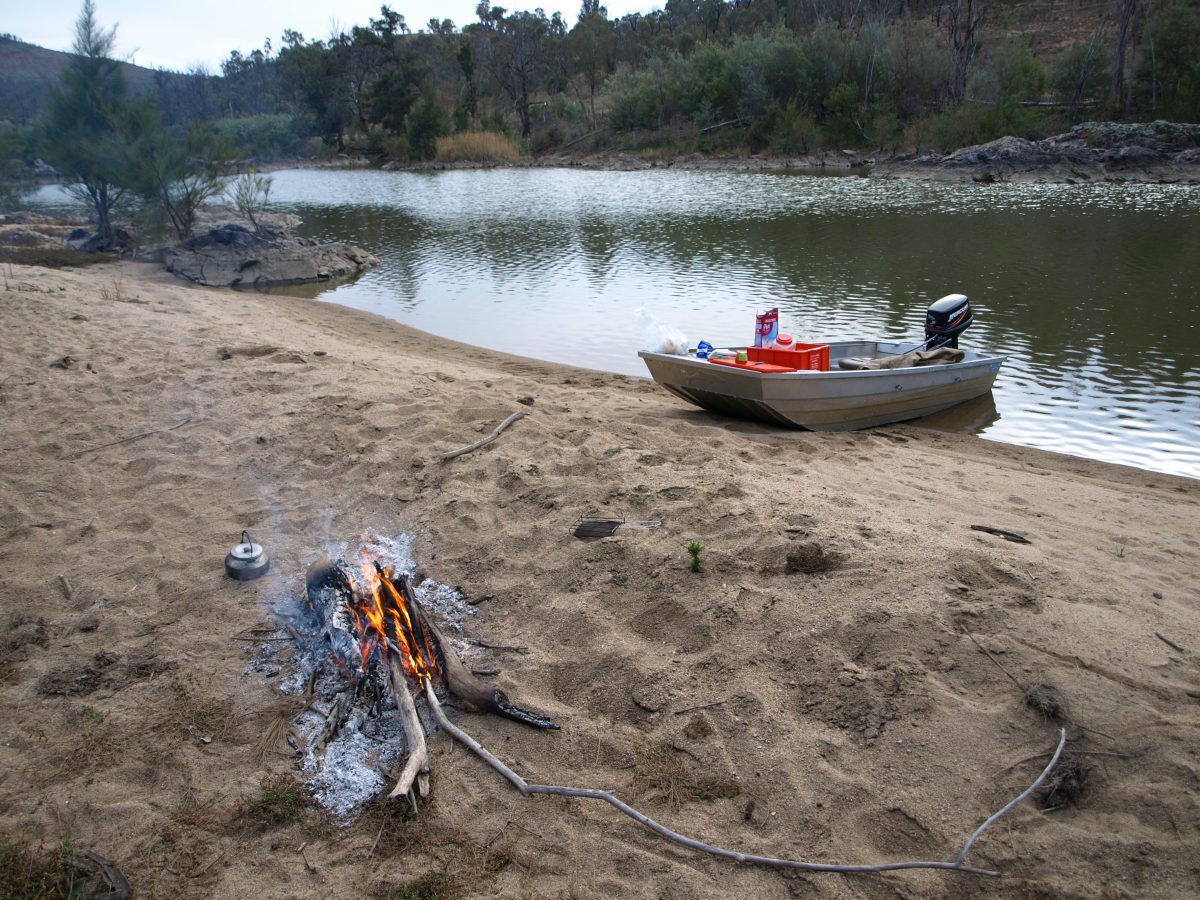
One of the best places to fish in the ACT is along the Murrumbidgee River. Photo: Mark Jekabsons.
The ACT region is ripe for fishing, with fish stocks in many of the urban lakes, small creeks, and dams thriving.
To get the latest updates on fishing safely, sustainably, and successfully in the region, Region spoke with the Canberra Fisherman’s Club (Canberra Fishos), Canberra Anglers Association (CAA), and an aquatic ecologist from the ACT Government.
“It really is quite remarkable that we can have such good quality fishing in the middle of town,” says Canberra Fishos vice president Glen Malam.
“Even in the smaller creeks we have quite healthy populations of large goldfish. So you really don’t have to go to the pet shop and pay $100 for these koi carp.”
Aside from those discount finds, Malam says that the Canberra lakes are becoming one of the premier native fisheries in Australia.
“It’s not unusual now to catch large Murray cod and good-sized golden perch in the local lakes, about 20 metres away from people’s houses in some cases.”
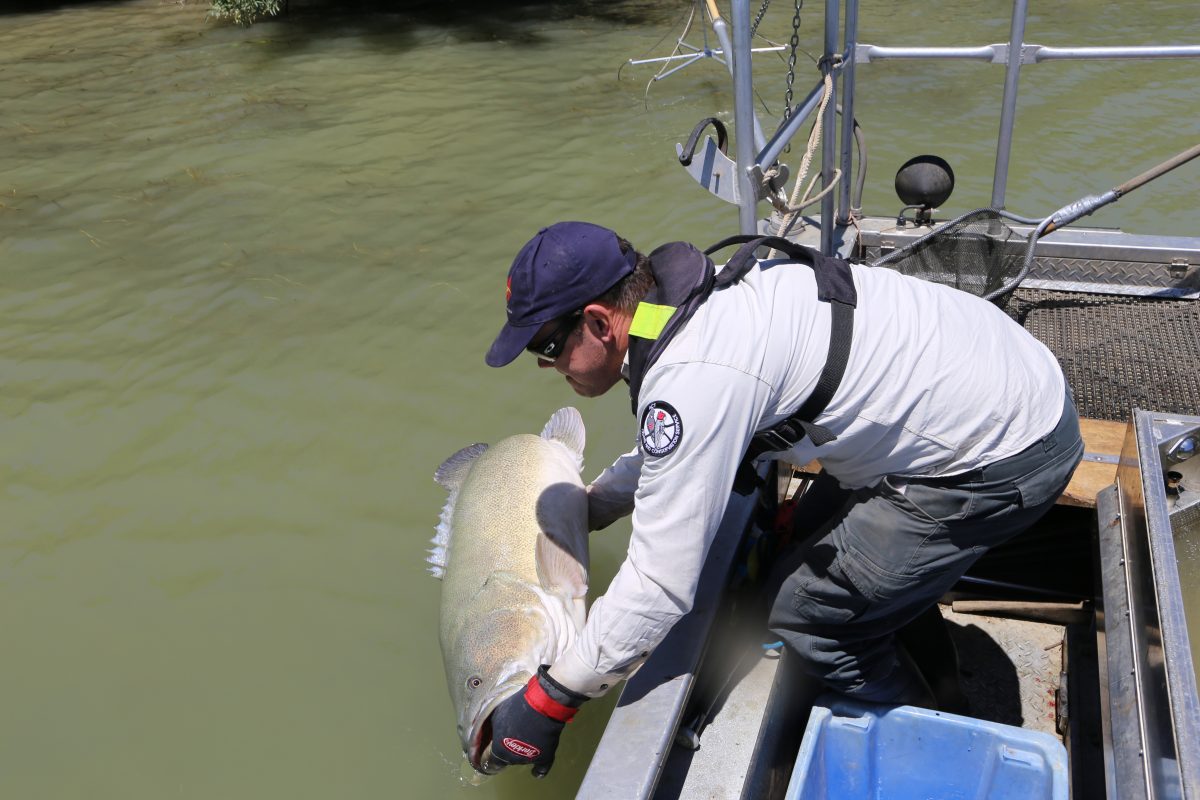
Murray cod, like this one shown here in Matt Beitzel’s hands, have been growing in size and availability due to stocking efforts across the ACT. Photo: Mark Jekabsons.
Stocking of native fish in the ACT lakes with fingerlings (small fish under a year in age) has been an ongoing program for many years as they do not breed in large quantities. This is largely due to the competition they have with pests like carp and red fin perch, but also because of the irregular climate in the region which has interrupted their survival rate.
Claude Daniels, president of the CAA, says that despite this issue the region’s fish are all great to catch and you can use all methods, whether it be fly, bait or lure. Daniels says that all the region’s fish are edible, but recommends people check the water quality before taking their catch home.
“The Government and fishing clubs promote catch and release, but also respect fishers’ desire to take home a catch for a well-earned meal. Some comment that redfin perch are the best freshwater table fish.”
A guide that all should be aware of and follow is the ACT Government’s factsheet on recreational fishing, which is available below. It clearly outlines the catch and size limits of all fish available in the region, the rules in each waterway, and when the fishing season is open or closed.
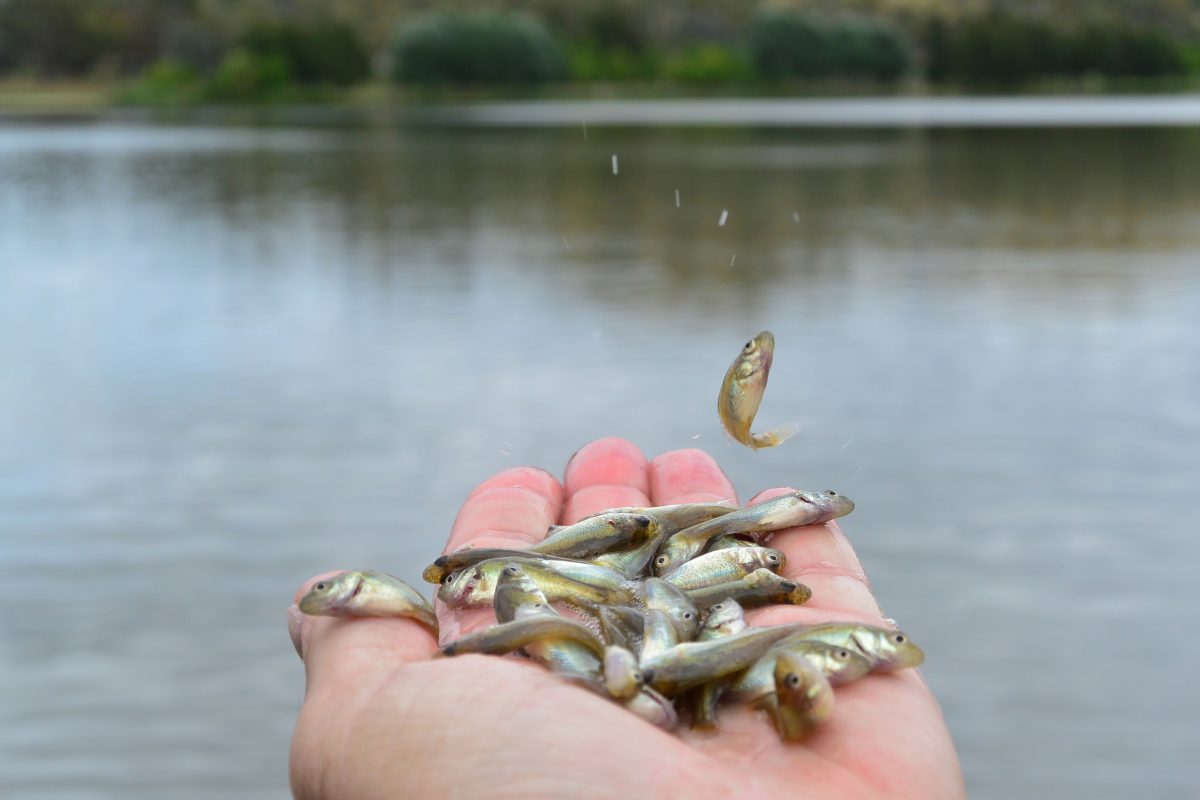
The ACT EPSDD stock the urban lakes with native fish such as golden perch fingerlings. Photo: Mark Jekabsons.
Matt Beitzel, an aquatic ecologist who performs conservation research for the ACT’s Environment, Planning & Sustainable Development Directorate (EPSDD), says that Canberra fishers mostly release their native fish, “which is great, but people really need to brush up on their fish handling skills so that the fish have the best chance of surviving post release”.
“There’s things that you can do like cradling the fish, leaving the fish in the water, getting the hook out and ensuring that they’re not leaving it in there. People can use things like circle hooks if they’re bait fishing, which gives the fish a much better outcome after releasing them.”
Organisations like the CAA and Canberra Fishos provide regular training sessions for amateurs, details of which can be found at the bottom of the article.
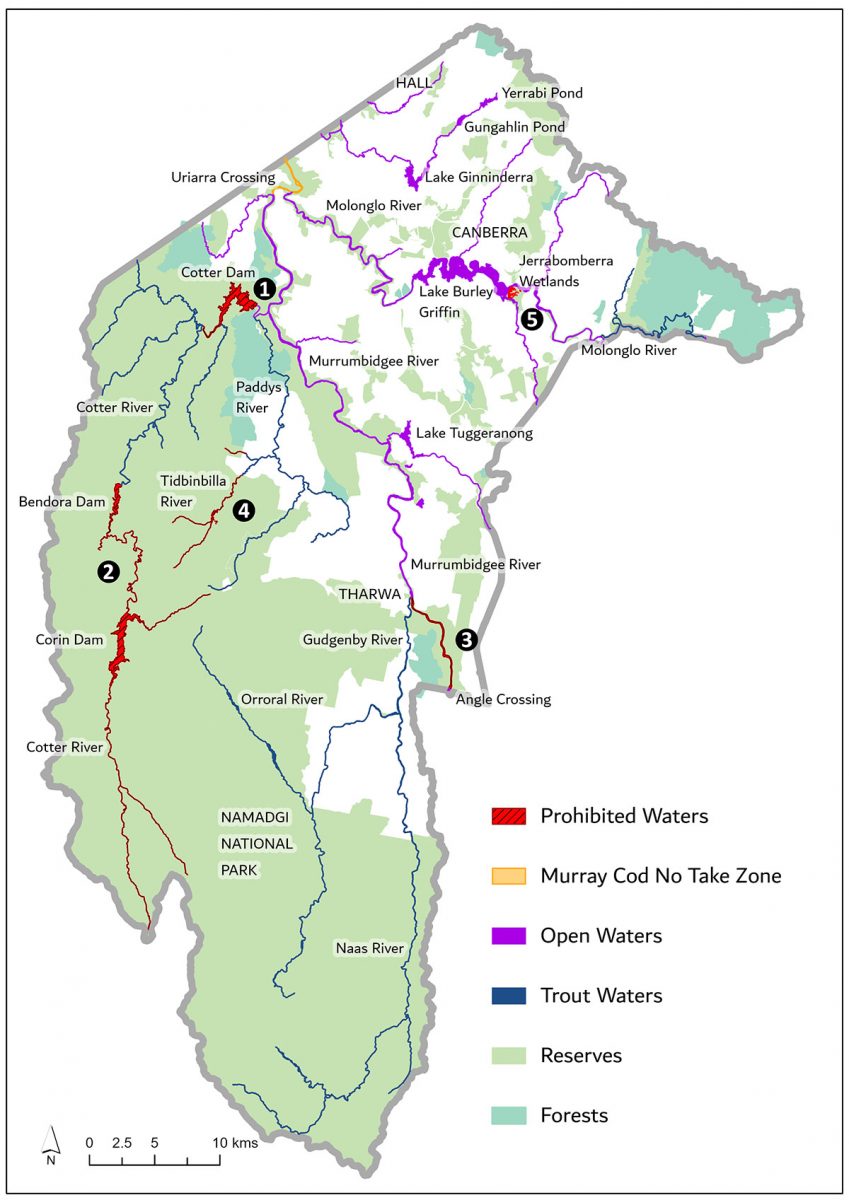
The Territory Government’s map of ACT’s recreational fishing waterways. Photo: ACT Government.
Beitzel says “another issue that really gets on my goat is yabby traps”. The older but more commonly used opera house traps are banned in all of the ACT and surrounding waterways. This is due to their ability to drown platypus and water rats who aren’t able to get out, which according to Beitzel happens frequently as people often forget to pick them up. He recommends using pyramid traps instead which have an open top and are available at all the major retailers.
In spring, Beitzel’s team surveyed fish populations in the urban lakes and Murrumbidgee River, which is done every two to three years. They found large golden perch in Lake Ginninderra, the Belconnen lakes, as well as Yerrabi and Gungahlin Pond. Then in Tuggeranong they found a prominent population of medium-sized Murray cod. Trout are an exotic in the ACT and used to be stocked heavily during the development of Canberra, but there have been repeated attempts over the past few decades to decrease their population. Now they can be found along the Cotter River and throughout other parts of the Namadgi National Park.
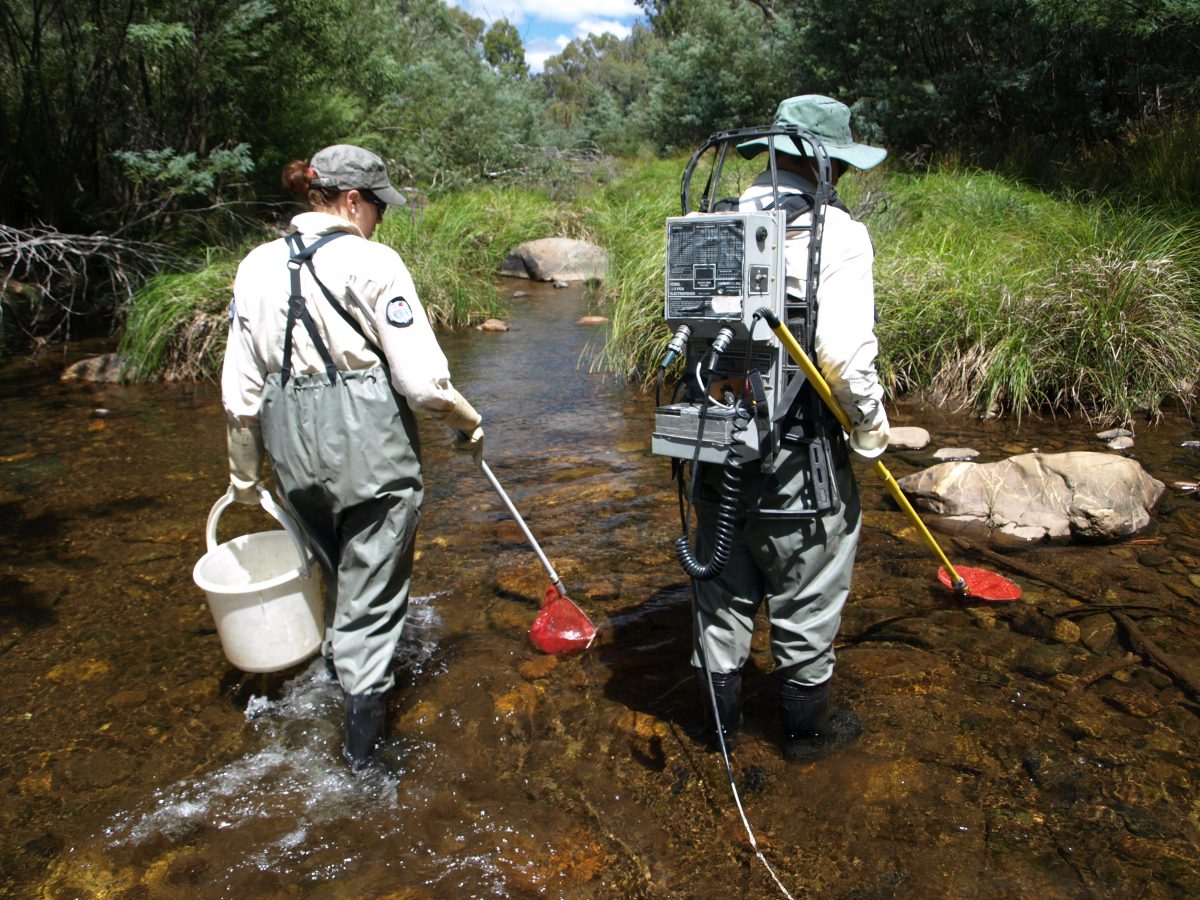
Matt Beitzel’s team survey waterways using electrofishing devices. Photo: Mark Jekabsons.
Over the past few years, the Federal Government has been leading a research program called the National Carp Control Plan. Carp are the dominant fish species in the ACT, although Beitzel says “there are large areas of the ACT where they are not, and we want to keep it that way”.
“They are very good at taking advantage of poor habitats and water quality. So when everything else fails, they go gangbusters. Unfortunately carp just recently got into the Googong Dam, which is a NSW waterway but also an ACT water supply. Once you’ve got them in, there’s very little you can do to get them out so it’s all about preventing the spread.”
Another problematic fish are red fin perch, as they carry a disease called the Epizootic Haematopoietic Necrosis (EHN) virus which affects some of our native threatened species. They’ve been implicated in wiping out Macquarie perch from large sections of the Murrumbidgee catchment area.
Beitzel says fishers have been known to aggravate the issue by moving species around, which is illegal in the ACT without a permit. He asks that people notify the EPSDD and ACT Wildlife if they come across an irregular fish for the region.
You can find the ACT Government’s recreational fishing factsheet here.
For more information on the Government’s National Carp Control Plan you can visit their official website here, or read Canberra Fishos’ easy to understand guide here.
Those fishing in the ACT do not require a licence, but for the surrounding waterways in NSW, they do. All details can be found here.
Canberra Fishos run an annual NSW and ACT wide ‘Carp-Out’ fishing competition at Lake Burrinjuck alongside other clubs. For further details on the event and any training courses they provide, you can visit their website here.
The CAA run annual free fly casting instructional programs during September along with other events. Further information can be found at their website here.












